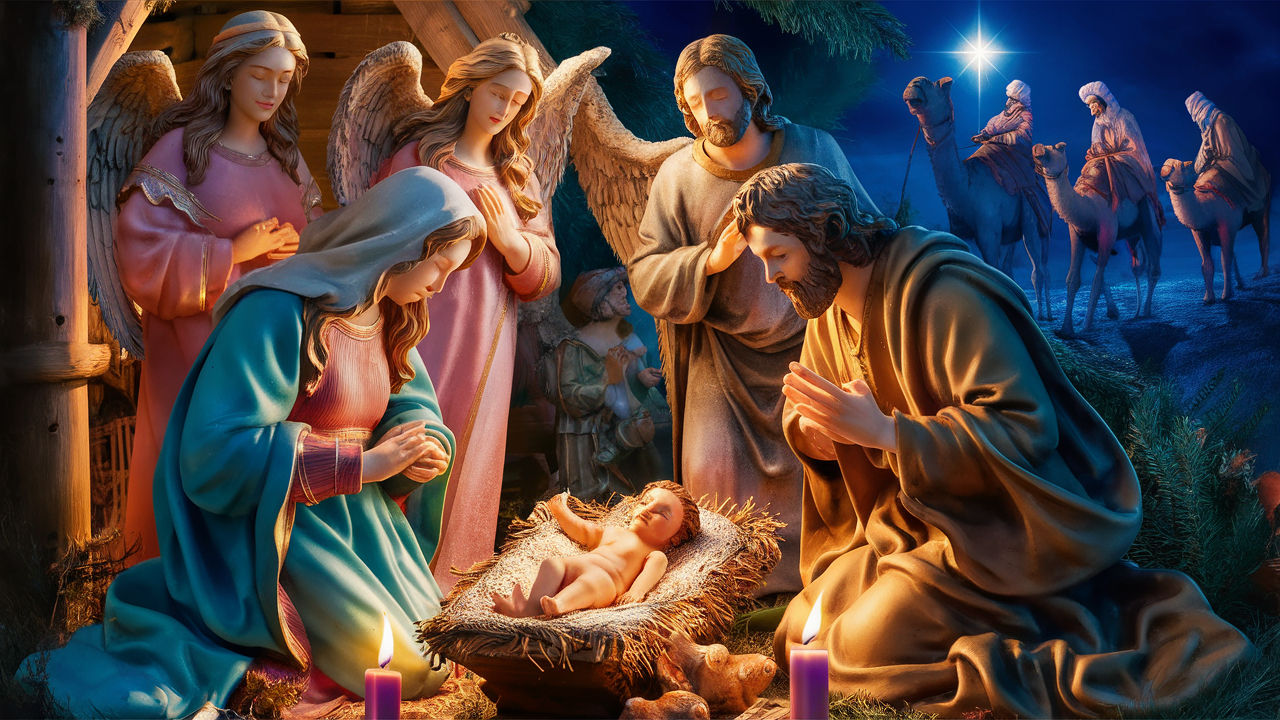The word “Nativität”, derived from the Latin term nativitas, meaning “birth”, holds deep spiritual, cultural, and artistic significance. Across centuries, the Nativity has represented more than just the birth of Christ — it symbolizes hope, renewal, and divine love. In this comprehensive guide, we explore the religious origins, artistic expressions, and modern-day relevance of the Nativity, shedding light on why it remains one of the most cherished symbols of faith and tradition worldwide.
Understanding the Meaning of Nativität
At its core, Nativität refers to the birth of Jesus Christ, celebrated on December 25th as Christmas. This sacred event marks the incarnation of God in human form — a central doctrine of Christian belief. The Nativity scene, featuring the infant Jesus in a manger surrounded by Mary, Joseph, shepherds, angels, and the Magi, encapsulates the miracle of divine humility and eternal salvation.
However, Nativität extends beyond Christianity. The word itself represents new beginnings, life, and creation — universal themes that transcend religious boundaries. From art to literature, the concept of Nativität has been used as a metaphor for spiritual rebirth, hope, and the dawn of a new era.
Historical Origins of the Nativity Celebration
The tradition of celebrating the Nativity dates back to the 4th century, when Christians began observing December 25th as the official date of Christ’s birth. This date was likely chosen to coincide with ancient pagan festivals marking the winter solstice, symbolizing the victory of light over darkness. Over time, Nativity celebrations evolved into a cornerstone of Christian liturgy, blending spiritual reflection with cultural festivity.
By the Middle Ages, the Nativity scene (Crèche or “Krippe”) became a prominent form of devotion. Saint Francis of Assisi is credited with creating the first live Nativity scene in 1223, aiming to bring the Gospel story to life for common people. Since then, Nativity depictions have become a central element of Christmas celebrations worldwide.
Symbolism Within the Nativity Scene
Every figure and element in the Nativity scene carries profound meaning. The infant Jesus represents divine innocence and redemption. Mary, symbolizing purity and devotion, embodies faith in God’s will. Joseph stands for protection and humility, a guiding figure of quiet strength. The shepherds signify simplicity and the universal call to faith, while the Magi symbolize wisdom and the recognition of divinity by the wider world.
The manger, a humble feeding trough, emphasizes Christ’s humility and accessibility. The star of Bethlehem is the beacon of divine guidance, while the angels reflect heavenly rejoicing. Together, these symbols narrate a story of love, peace, and divine purpose that continues to inspire believers across generations.
Artistic Depictions of Nativität Through the Ages
From Renaissance paintings to modern sculptures, the Nativity has been one of the most frequently depicted themes in Christian art. Masters such as Giotto, Botticelli, Caravaggio, and Rembrandt immortalized the sacred moment with breathtaking beauty and emotional depth. Each artist brought their unique interpretation — from Giotto’s tender realism in The Nativity, 1305 to Caravaggio’s dramatic chiaroscuro in The Adoration of the Shepherds.
During the Baroque era, artists infused Nativity scenes with grandeur, dynamic movement, and rich symbolism. In contrast, modern and contemporary artists have reimagined the Nativity through abstract, multicultural, and inclusive lenses, reflecting evolving global perspectives on faith and humanity.
Cultural Variations of the Nativity Around the World
The celebration of Nativität varies widely across cultures, each adding its unique traditions and artistry. In Italy, elaborate Presepi (Nativity displays) decorate homes and churches, featuring hundreds of figurines and detailed landscapes. In Spain and Latin America, live Nativity plays called “Las Posadas” reenact Mary and Joseph’s journey to Bethlehem. In Germany, wooden Krippen scenes often feature hand-carved figures passed down through generations.
In the Philippines, the “Belen” is a beloved Christmas symbol, while in Mexico, piñatas and festive processions accompany Nativity celebrations. Each cultural interpretation reinforces the global message of peace, community, and spiritual renewal embodied by the birth of Christ.
The Spiritual and Emotional Power of Nativität
The enduring appeal of the Nativity story lies in its universal message of hope. It reminds humanity that even in the darkest times, light can be born from humility and faith. The scene of a child born in a manger speaks to the transformative power of love and simplicity. It teaches that greatness is not measured by wealth or status but by faith, compassion, and humility.
For believers, reflecting on the Nativity during Christmas becomes a moment of spiritual renewal — an invitation to rediscover gratitude, forgiveness, and the essence of divine love. Even for those outside the Christian faith, the Nativity’s themes of birth, renewal, and peace carry profound emotional resonance.
Modern Interpretations and Relevance Today
In today’s world, Nativität continues to inspire both spiritual devotion and artistic creativity. Many modern churches and artists incorporate digital projections, immersive installations, and multicultural storytelling into Nativity presentations. The message of unity and compassion remains timeless, adapting beautifully to contemporary contexts.
Moreover, in an era often defined by division and materialism, the Nativity narrative reminds society of the importance of humility, empathy, and shared humanity. Its symbolism continues to transcend religious boundaries, serving as a universal story of hope and rebirth for all.
Conclusion: The Timeless Legacy of Nativität
The Nativität stands as a testament to the enduring power of faith, art, and human connection. From ancient traditions to modern interpretations, it continues to inspire awe, reflection, and spiritual awakening. Its message — that light can emerge from darkness and love from humility — resonates now more than ever. As we reflect upon the Nativity, we are reminded not only of the birth of Christ but of the rebirth of hope within our own hearts.
Frequently Asked Questions (FAQ)
1. What does “Nativität” mean?
“Nativität” means “Nativity” in German, referring to the birth of Jesus Christ and the celebration of Christmas.
2. Who created the first Nativity scene?
Saint Francis of Assisi created the first live Nativity scene in 1223 in Greccio, Italy.
3. Why is the Nativity important?
The Nativity symbolizes the birth of Christ, representing hope, salvation, and divine love.
4. How is the Nativity celebrated around the world?
Different cultures celebrate with live plays, art displays, songs, and festive decorations symbolizing the birth of Jesus.
5. What is the message of the Nativity today?
The Nativity reminds us of humility, love, and the possibility of renewal — values that are timeless and universal.





